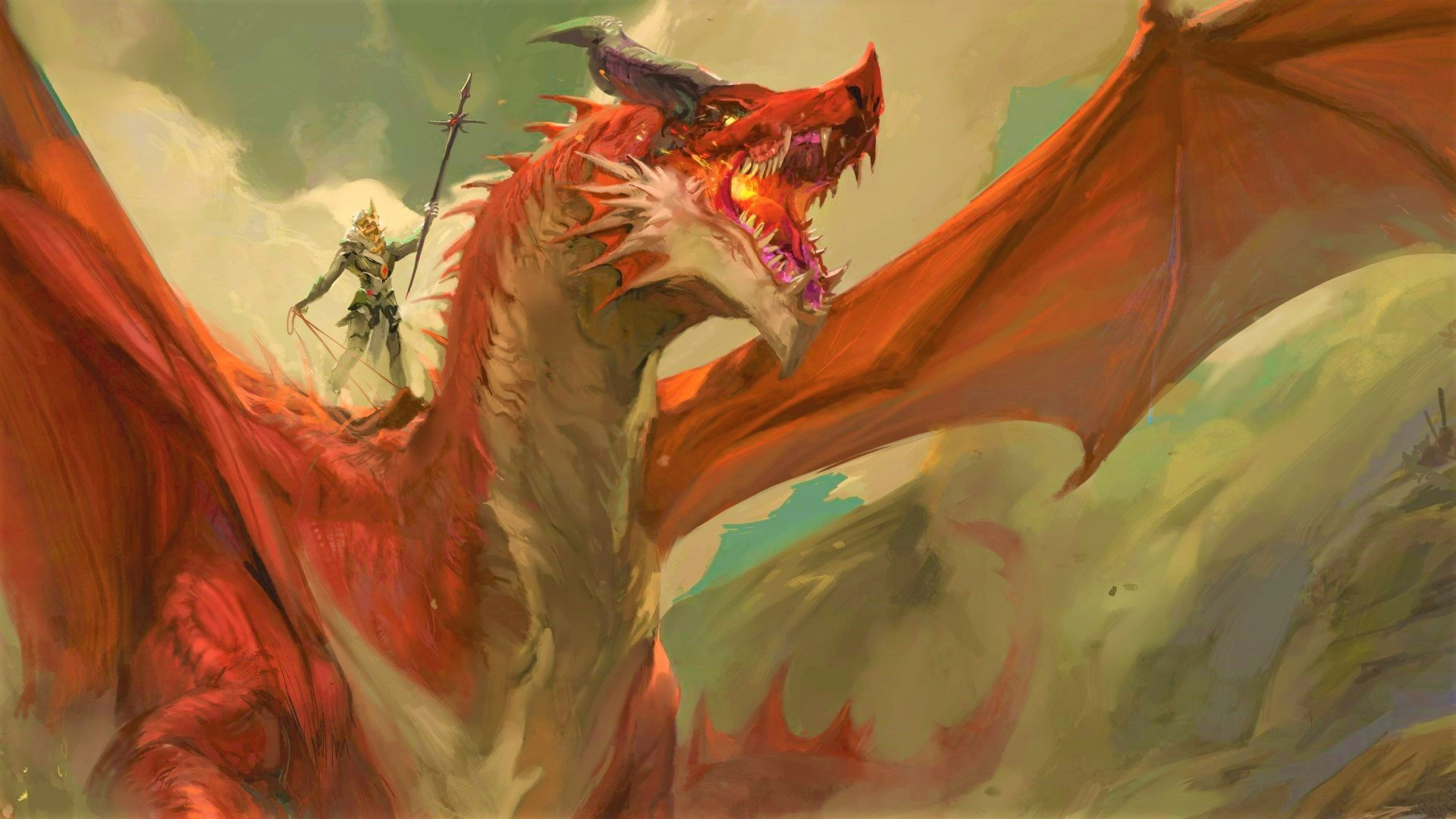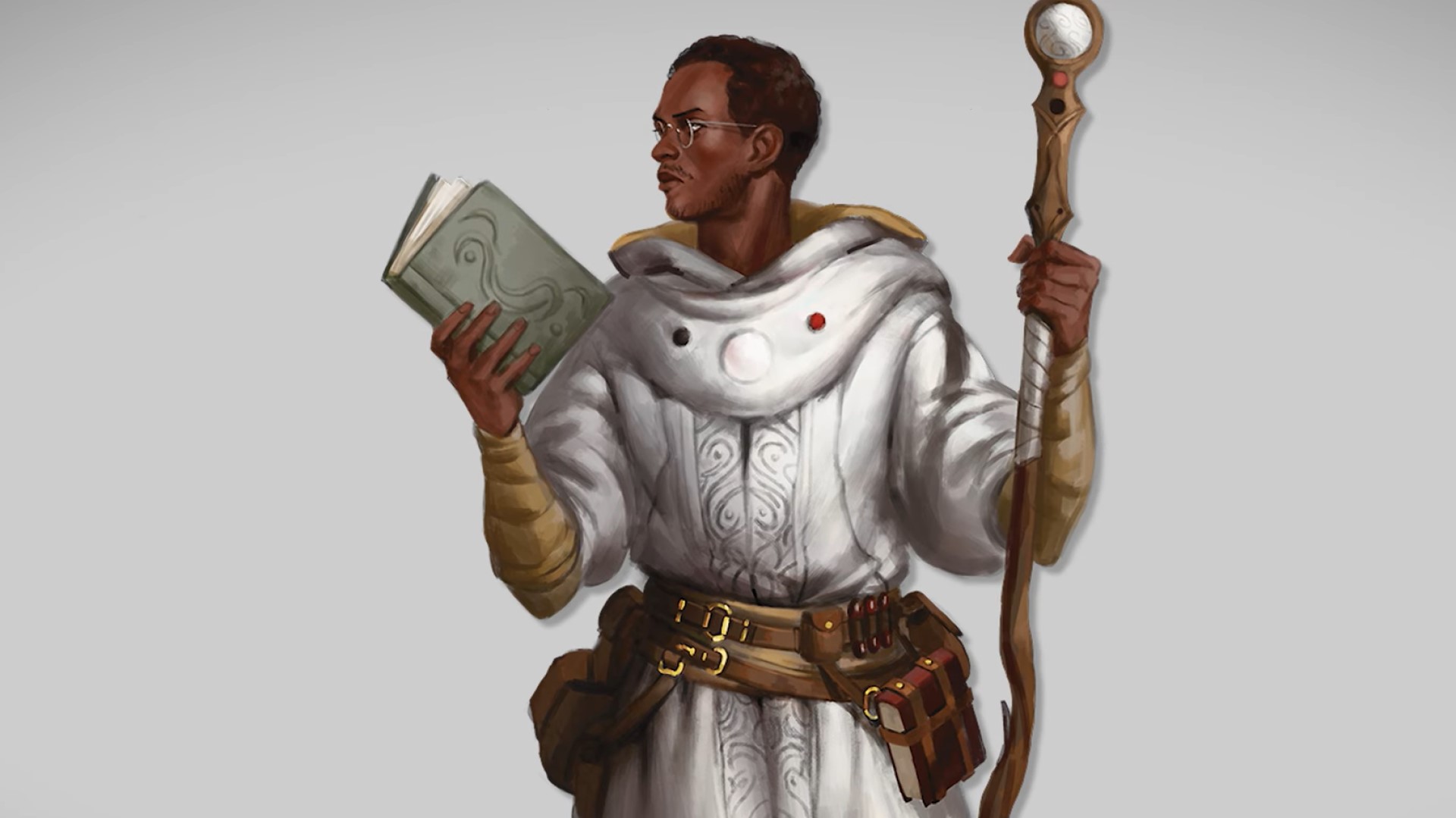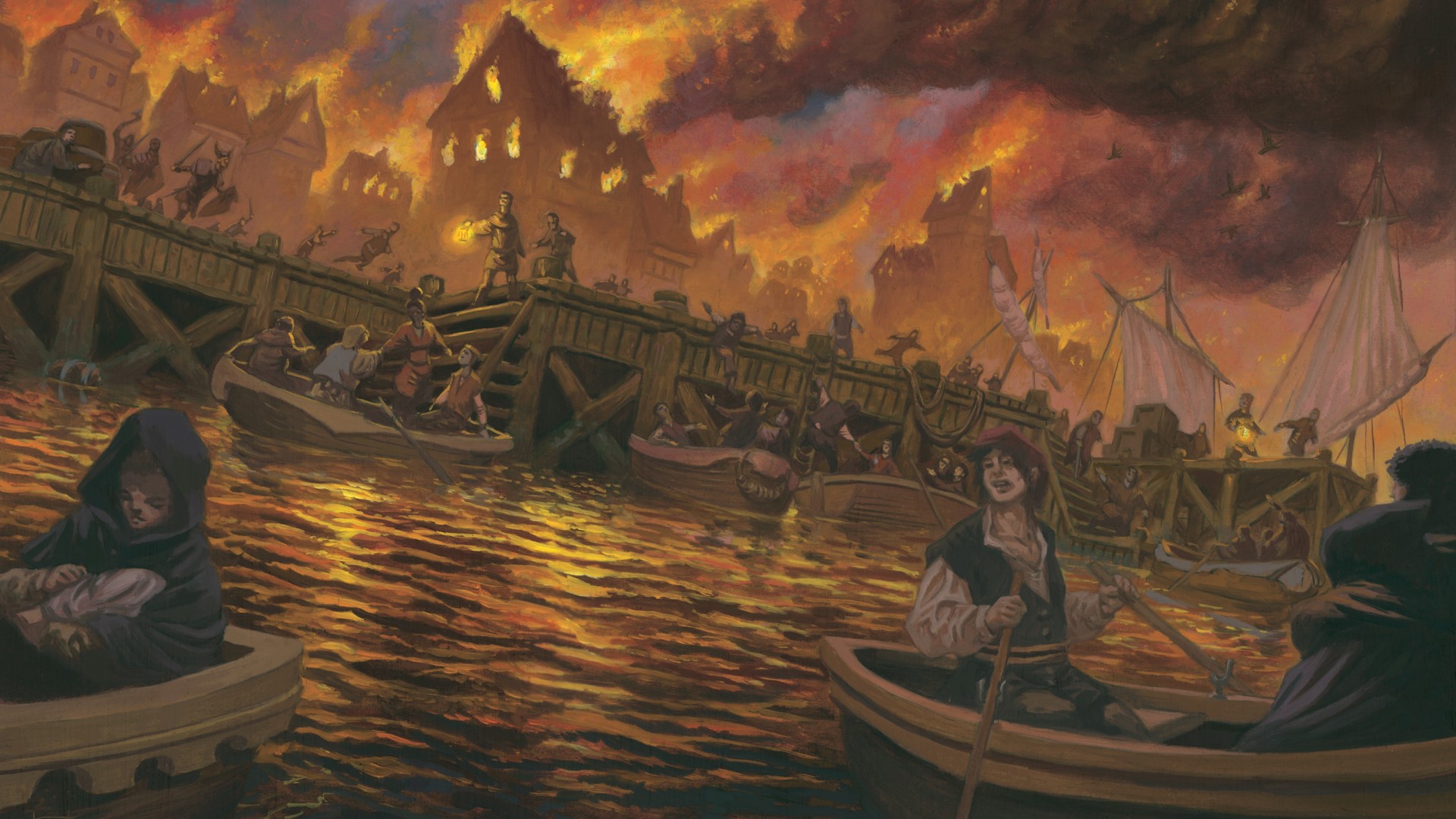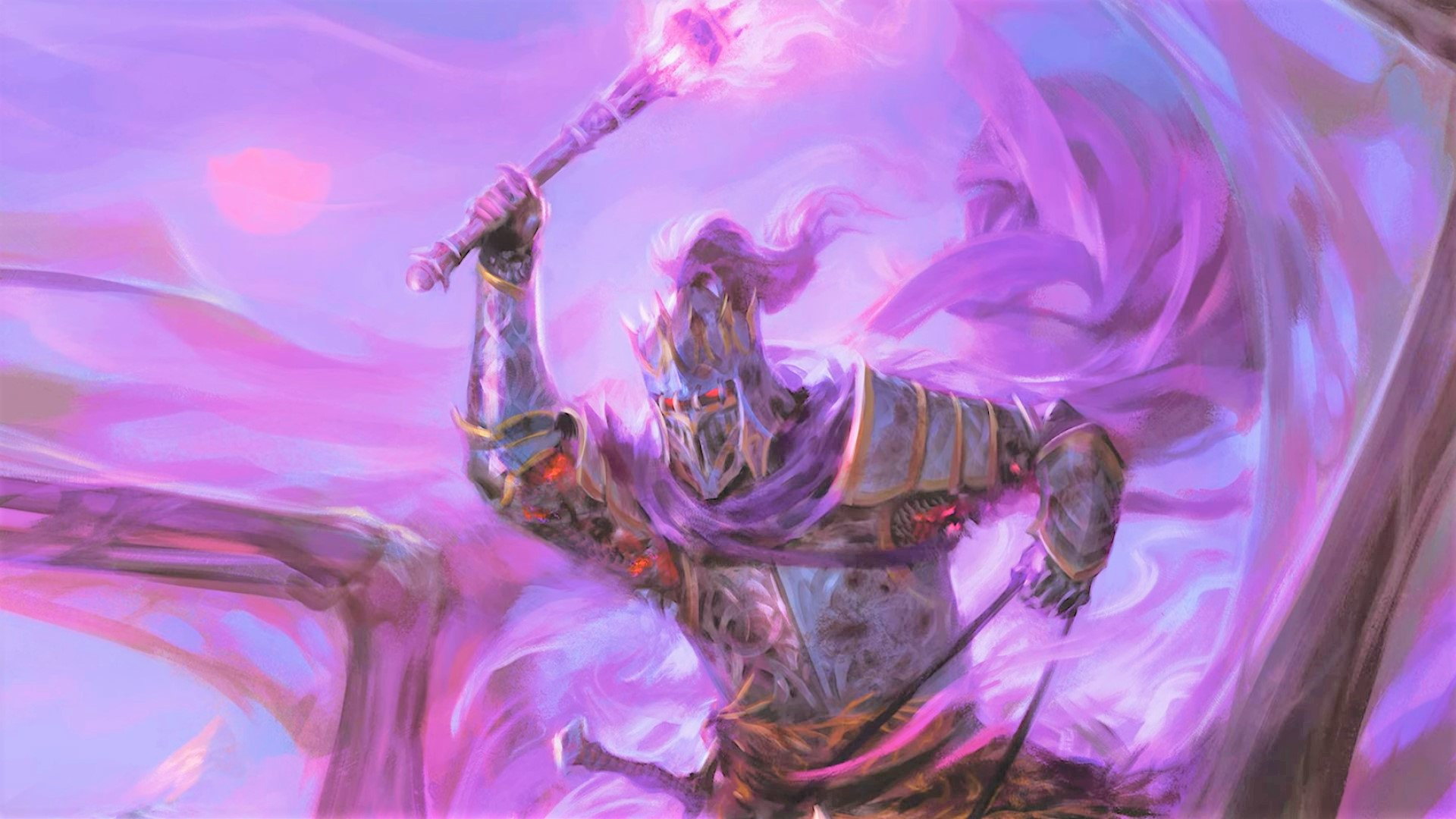Our Verdict
Dragonlance: Shadow of the Dragon Queen presents a modern, approachable, and engaging version of Krynn for 5e players. The character options aren't much more than competent, and the story has weak spots, but the overall impression is exciting indeed.
The gods of Krynn are stirring after an age of silence. Dragons have been spotted on the horizon, and they carry a war of unthinkable scale on the wind of their wings. The Dragon Queen Takhisis is sending in her minions, ready to burn cities to the ground and bend the land to her will. The DnD Dragonlance setting has been revived, and the new campaign book DnD Dragonlance: Shadow of the Dragon Queen does this with plenty of style.
Released on December 6, Dragonlance: Shadow of the Dragon Queen is easily one of the strongest DnD campaigns of the year. As well as bringing one of those beloved retro DnD settings to a modern audience, the campaign book has a handful new offerings for DnD races, DnD backgrounds, and a particular member of the DnD classes.
Before we look at the highs and lows of the new Dragonlance, here’s a quick bit of housekeeping. Shadow of the Dragon Queen is a campaign book that’s going to sustain D&D players for a while, so these impressions are currently based on a complete readthrough rather than a complete playthrough. Also, while I have some thoughts on the Dragonlance: Warriors of Krynn board game, this is a review of the campaign book only – it’s hard to recommend something you haven’t played.
Setting and character options
Dragonlance: Shadow of the Dragon Queen is primarily a campaign book. It’s recommended for four to six players, and characters will progress from levels one to 11 over the course of the adventure. The majority of the book’s content is for this adventure (which I’ll muse on a bit later), but there are also a few chapters dedicated to setting the scene and creating suitable D&D characters.
One thing Shadow of the Dragon Queen is not is an encyclopaedia for the Dragonlance setting. There are well over 100 novels that dive deep into Dragonlance’s lore, but Wizards has chosen to keep context to a minimum. Krynn’s history is given on a need-to-know basis, with a lot of important background info conveyed through play rather than pre-game homework. As someone who hasn’t entered the world of Krynn before, I was grateful for the economic approach.
Shadow of the Dragon Queen also isn’t going to blow your socks off with new character options. The Kender is the only new (to 5e) playable species included. Their often-problematic penchant for thieving has been replaced with an insatiable curiosity, and they work with the same DnD stats as the rest of the game’s fantastical races. The Kender Taunt ability gives them a solid supporting role in combat. It’s nice stuff, but nothing too shiny.
The only class content is a new Sorcerer 5e subclass, but it did pique my interest. Lunar Sorcerers are influenced by the shifting phases of the moon, and they can attune themselves to the full moon, new moon, or crescent moon after every long rest.
Each phase gives access to a different spell list at lower levels, and they reduce the metamagic cost for certain schools of magic at later levels. The 5e spells on offer across the three phases aren’t perfectly balanced, and you’ll definitely want to stick to certain moon phases more than others, but it’s still a novel subclass that should provide fun new ways to play.
Shadow of the Dragon Queen places a lot of emphasis on backgrounds, as well as 5e feats. Characters who affiliate themselves with the Mages of High Sorcery or the Knights of Solamnia have their own dedicated background and feats. There’s only one feat available for everyone else (which seems ready-made for the Paladin 5e and the Cleric 5e, two of the campaign’s preferred player classes).
I wouldn’t expect to get a lot of use out of this content outside your Dragonlance campaign, but they help immerse you in the world and get a head start in combat situations. Even the existing feats recommended by the book focus on making sure your low-level characters stand a fighting chance on the battlefield.
Honestly, thank the DnD gods for first-level feats. We knew this was a new change coming in One D&D/DnD 6e, but it’s been implemented early for Dragonlance. In a full-on war campaign, extra DnD skills or a buff to your Strength are more than welcome.
The campaign
Shadow of the Dragon Queen captures just one small part of the War of the Lance. The Dragon Queen Takhisis (or Tiamat, as you may already know her) has sent the Red Dragon Army to conquer the nation of Solamnia, and the players must thwart the plans of one of her allies, the death knight Lord Soth.
This is a high-stakes, high-fantasy D&D campaign. Though Wizards has tried hard to add nuance to the setting’s binary definitions of good and evil, this is still a campaign that’s heavy on traditional heroism and divine intervention.
There’s an abundance of just knights ready to do glorious deeds, but Shadow of the Dragon Queen isn’t handling war too lightly. The campaign’s story effectively explores the effects of a siege on non-combatants, as well as the complex morals and motives people may have in a time of great crisis. The campaign is also perfectly comfortable killing off players. In fact, it almost seems to expect this, building in at least one opportunity to revive a fallen character.
Personally, I’m a fan of how the campaign book handles mass combat scenarios. A tool called the Fray puts a wall around a small portion of the battlefield, and it deters players from straying by chucking damage and unpleasant encounters their way if they enter the Fray zone. Dice tables add combat events that make the stage of battle feel unpredictable and alive, but there’s not too much more for DMs to manage than in regular, small-scale encounters.
Overall, the campaign is engaging and exciting. This is a setting and story that could feel old-hat, but it’s stuffed with plot hooks and twists that keep you invested. It’s not without chaff, of course – there is one chapter filled with encounters that feels a little like filler at times, for example. It also doesn’t have a particularly memorable NPC cast (which is a shame, as there’s a significant amount of NPC mangement). However, the high points of the plot hit very high, with the first and final chapters really standing out as high points.
Shadow of the Dragon Queen has crafted a version of Krynn that’s welcoming for a total newbie as well as a returning veteran. Wizards has made clear efforts to address the more two-dimensional parts of the original material, and they’ve managed to make a pretty archetypal story feel like new. Even if you’re not big into fantasy wars, this one is worth pausing for.





